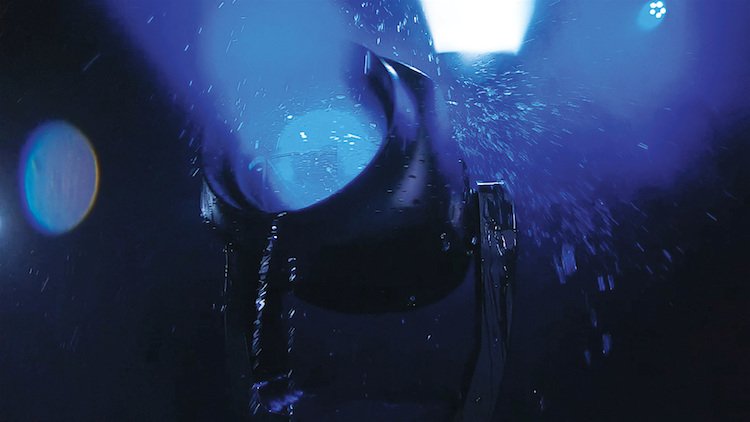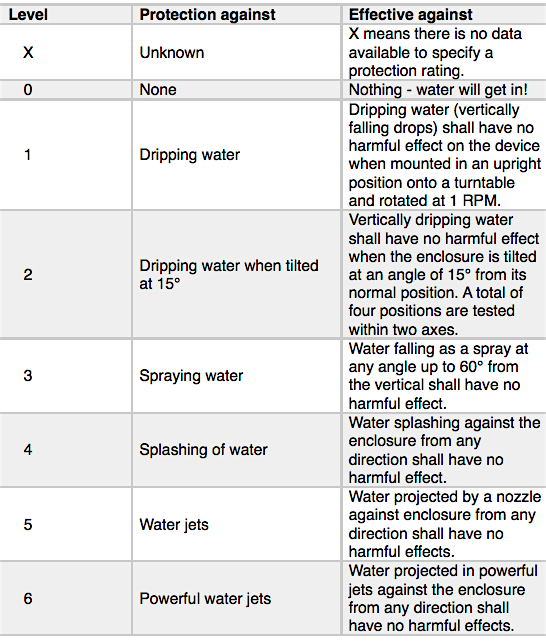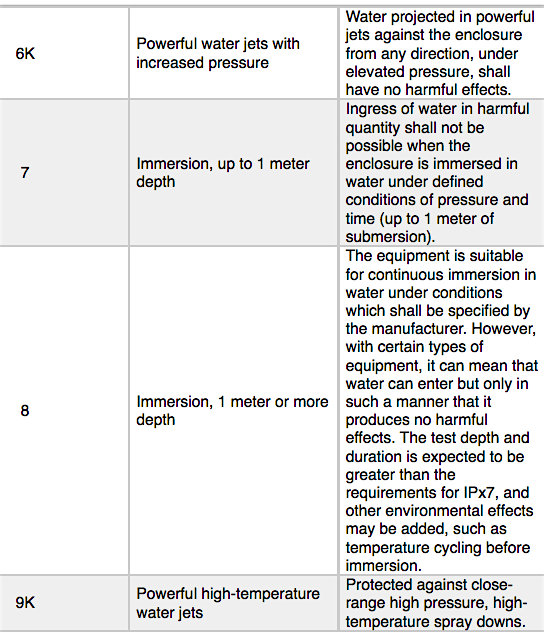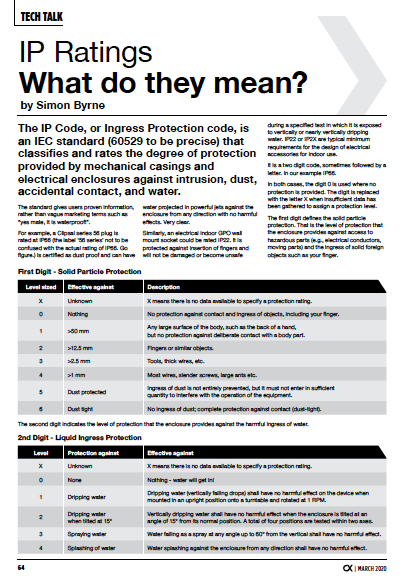News
17 Mar 2020
IP Ratings – What do they mean?

Subscribe to CX E-News
The IP Code, or Ingress Protection code, is an IEC standard (60529 to be precise) that classifies and rates the degree of protection provided by mechanical casings and electrical enclosures against intrusion, dust, accidental contact, and water.
The standard gives users proven information, rather than vague marketing terms such as “yes mate, it is waterproof!”.
For example, a Clipsal series 56 plug is rated at IP66 (the label ‘56 series’ not to be confused with the actual rating of IP66. Go figure.) is certified as dust proof and can have water projected in powerful jets against the enclosure from any direction with no harmful effects. Very clear.
Similarly, an electrical indoor GPO wall mount socket could be rated IP22. It is protected against insertion of fingers and will not be damaged or become unsafe during a specified test in which it is exposed to vertically or nearly vertically dripping water.
IP22 or IP2X are typical minimum requirements for the design of electrical accessories for indoor use. It is a two digit code, sometimes followed by a letter. In our example IP66.
In both cases, the digit 0 is used where no protection is provided. The digit is replaced with the letter X when insufficient data has been gathered to assign a protection level.
The first digit defines the solid particle protection. That is the level of protection that the enclosure provides against access to hazardous parts (e.g., electrical conductors, moving parts) and the ingress of solid foreign objects such as your finger.
First Digit – Solid Particle Protection

The second digit indicates the level of protection that the enclosure provides against the harmful ingress of water.
2nd Digit – Liquid Ingress Protection


In certain cases, you might see an IP rating given as ‘IPX7’, ‘IP5X’ or similar.
Ratings that feature an ‘X’ somewhere in the code simply denote that a numerical rating has only been provided for one of the two main ingress types (foreign body or water), but not for the other.
For example, IP5X will mean the product has been coded 5 against foreign body intrusion, but no certified level of moisture resistance is stated.
In some cases, a device may have further letters appended to provide more information related to the protection of the device:
Additional Letters

The letter K is a special case for powerful water jets. That is, the pressure from the jet itself could have the capacity to damage the item, as opposed to the liquid within the jet.
The IP69K standard was originally developed for vehicles, especially those that need regular intensive cleaning (dump trucks, concrete mixers, etc) but it is also used in other areas, such as food processing machinery and car wash equipment.
For example, many VuePix Infiled indoor LED Screens are rated at just IP30. Protection from tools and thick wires, but no protection from water. It makes sense; why add cost to a device if it is not going to face the elements?However, their outdoor products are rated at IP65. Dust tight and will stand up to water projected from a nozzle from any direction. Perfect!
Touring speaker manufacturers usually rate their products as IP54. Ingress of dust is not entirely prevented, but it won’t enter in sufficient quantity to interfere with the operation of the box, and water splashing against the enclosure from any direction won’t have a harmful effect.
Makes sense.
As an aside, Apple’s iPhone 11 Pro is an IP68 rated package where they claim it is dust proof and will survive a dunk in water up to four meters in depth for up to 30 minutes without sustaining any damage.
You could rely on that for warranty purposes.
Of course, none of this applies if the enclosure is compromised or not assembled correctly. I’ve seen many three-phase cables where the water proofing gland is missing from the back of the plug where the cable enters the housing.
In that case, it is probably IP20! You can’t get your finger in, but dust and water definitely can.
Common IP Ratings

The IP Code is invaluable when specifying equipment for use outdoors. As long as it is rated properly for the conditions where it is installed, you can be confident that it will perform reliably and safely.
CX Magazine – March 2020
LIGHTING | AUDIO | VIDEO | STAGING | INTEGRATION

Entertainment technology news and issues for Australia and New Zealand
– in print and free online www.cxnetwork.com.au
Further reading: Trending in Production Lighting – Weatherproof Fixtures – CX Magazine, December 2019.
Lead image courtesy ULA: Elation Professional – Proteus Hybrid
© VCS Creative Publishing
Subscribe
Published monthly since 1991, our famous AV industry magazine is free for download or pay for print. Subscribers also receive CX News, our free weekly email with the latest industry news and jobs.




